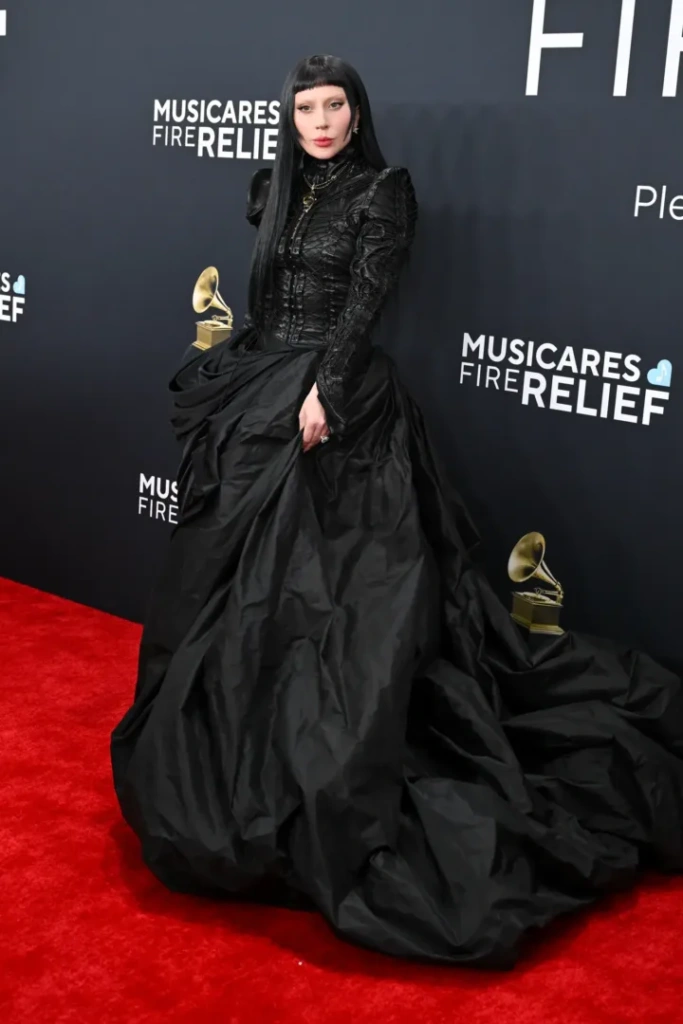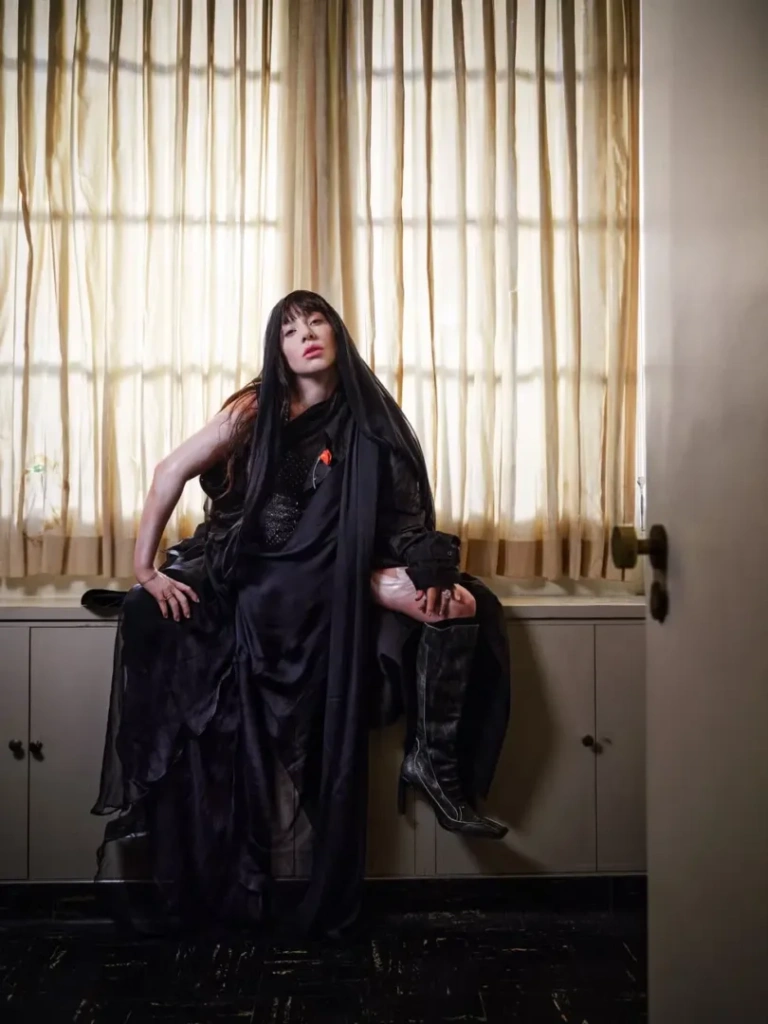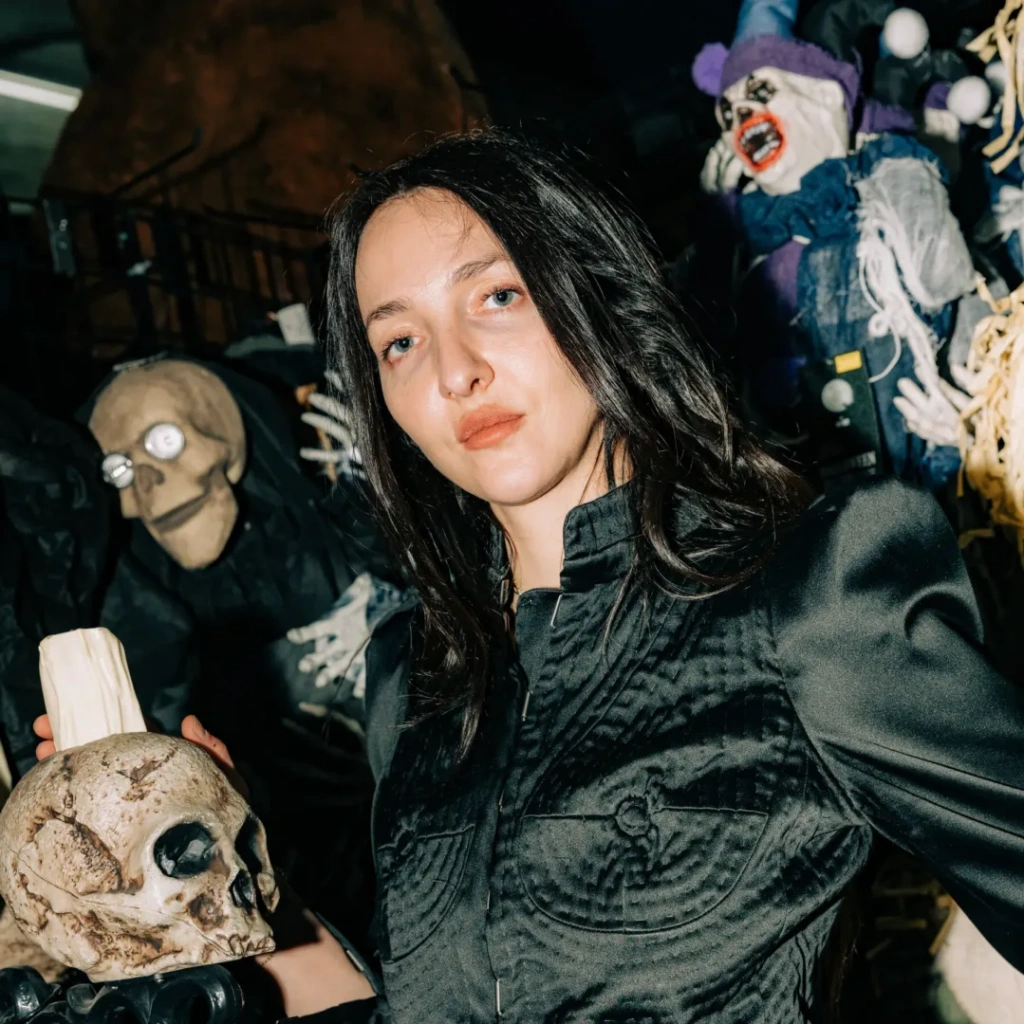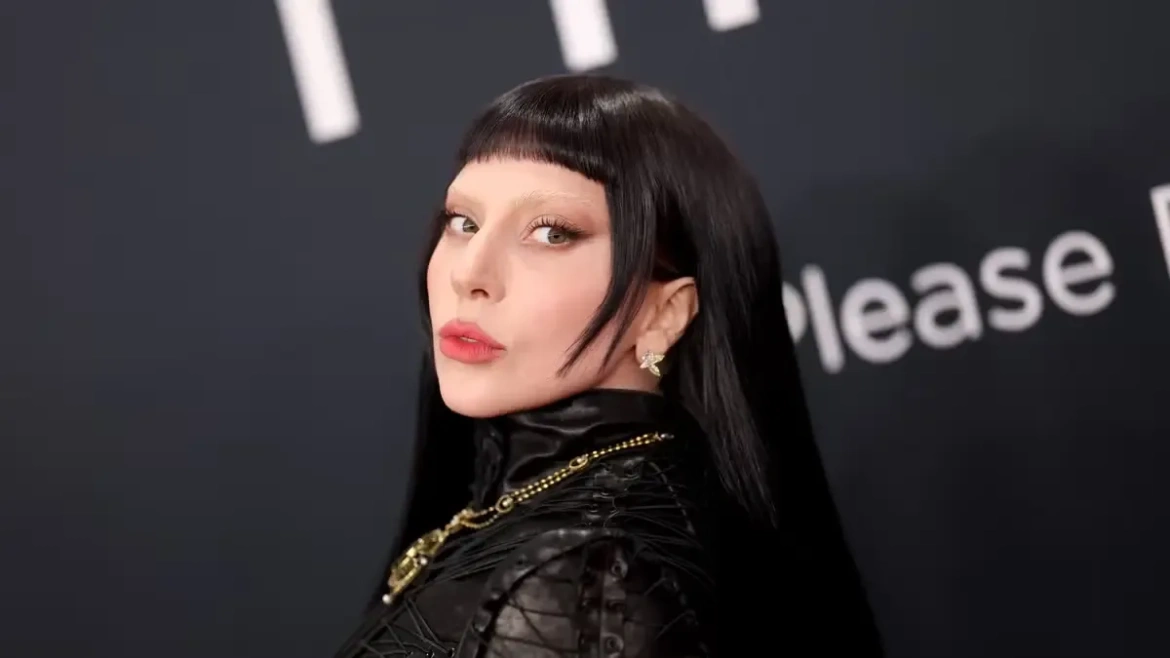While spring traditionally conjures images of pastel blooms and sun-drenched optimism, a darker, more enigmatic trend is rising—one that trades daffodils for daggers and meadow strolls for midnight rituals. This season, fashion is channeling the witch: a symbol of mystique, rebellion, and untamed femininity.
From the Catwalk to the Coven
The witch’s sartorial influence is undeniable on the runways. At London Fashion Week, Dilara Findikoglu’s collection wove hair, feathers, and shells into primal, ritualistic designs, while Comme des Garçons and Gabriela Hearst explored occult-inspired silhouettes. Rick Owens, ever the high priest of gothic grandeur, delivered his signature dark drama—proving that witchcraft isn’t just a trend, but a perennial force in fashion.
Beyond the ateliers, pop culture is spellbound. Lady Gaga’s Mayhem era drips with witchy iconography, from her Salem-esque tour visuals to her sweeping, funereal gowns. Netflix’s Wednesday returns with Jenna Ortega embodying deadpan gothic charm, and tarot—once relegated to mystic fringes—now graces Dior’s heritage and gallery walls alike. Even politics has inadvertently fueled the movement, with women reclaiming the “witch” label as a badge of defiance against patriarchal disdain.

The Power of Black: A Goth’s Manifesto
For those who live in the shadows, black isn’t just a color—it’s an armor, a mood, a philosophy. Vogue contributing editor Tish Weinstock, author of How To Be A Goth, explains:
“Black is dark and romantic, allowing me to convey strength while retaining softness. It’s both a shield and a canvas—something to hide behind, yet also a way to reveal something true.”
Stylist Shelly Vella champions its versatility: a cropped cape elevates jeans; a chiffon skirt paired with a fitted bodice whispers modern sorceress. And forget the myth that black “ages” its wearer—Vella argues it’s the ultimate enhancer, especially when punctuated with a bold lip or metallic accents.

Witchcraft Beyond the Wardrobe
The aesthetic isn’t confined to fashion. Interiors are embracing the occult with designs like Witch and Watchman’s Nocturne wallpaper—a gothic chinoiserie of serpents and spiders—while Bell Hutley’s moody, folklore-infused creations attract clients like Daisy Lowe.
Hutley sees the trend as part of a broader cultural awakening:
“From Wicca to #WitchTok, witchery is forming micro-communities. It’s no longer niche—it’s a coven, a shared language of mysticism and resistance.”
Why Now? The Witch as Subversive Icon
In an era of eroded autonomy and resurgent misogyny, the witch’s symbolism feels more potent than ever. She is the outsider, the ungovernable woman, the wielder of hidden power. As Weinstock notes:
“With toxic masculinity on the rise, there’s strength in the coven. It’s time to platform those who speak out—or at least dress like they could hex a man with a glance.”
How to Wear It
For those ready to dabble in dark magic, the key is subtle alchemy:
- Capes & Layers: A cropped black cape adds drama without costume-y excess.
- Fluid Fabrics: Chiffon, velvet, and brocade evoke ritualistic elegance.
- Symbolic Jewelry: Talismanic pendants, stacked rings, and mismatched earrings channel personal mystique.
- Monochrome Mastery: Head-to-toe black, broken with texture or metallic glints, is eternally powerful.

Final Incantation
This spring, fashion isn’t just flirting with darkness—it’s forging a pact. Whether through a whisper of lace, the swing of a cape, or the defiance of an all-black ensemble, the witchy aesthetic offers more than a look. It’s a statement: that femininity can be fierce, that mystery is magnetic, and that sometimes, the most powerful place to be is in the shadows.
So light your candles, draw your pentacles—or simply throw on that perfect black coat. The season of the witch is here.
